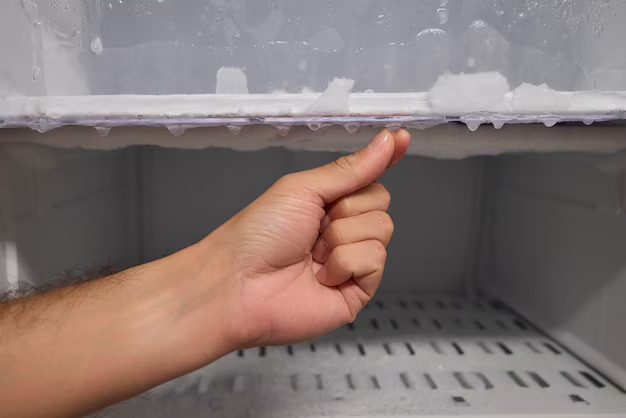How Much Warmer Does Your Fridge Get During a Defrost Cycle? A Comprehensive Guide
Have you ever noticed your refrigerator feeling a bit warmer than usual? If so, you’ve probably caught it during its defrost cycle. While this might sound alarming, understanding what happens during this phase can prevent unnecessary worries and ensure you’re using your fridge optimally. Let’s delve into everything you need to know about these cycles, why they’re essential, and how warm your fridge actually gets.
Unpacking the Defrost Cycle: Why Do Refrigerators Defrost?
The defrost cycle is a crucial component of your refrigerator’s functioning. Why?
- Prevents Ice Build-Up: Modern fridges are designed to automatically defrost to prevent excess ice build-up on the evaporator coils. Ice can impede the appliance's efficiency, forcing it to work harder and consume more energy.
- Maintains Efficiency: Continuous build-up of ice can lead to poor performance. The defrost cycle thaws this ice, ensuring optimal cooling and food preservation.
- Prolongs Appliance Life: Regular defrosting reduces wear and tear on the fridge’s components, potentially extending its lifespan.
How Often Does a Refrigerator Defrost?
Refrigerators typically undergo a defrost cycle every 8 to 12 hours. This frequency helps maintain their cooling efficiency by preventing clogs caused by ice accumulation.
How Warm Does It Get?
One of the primary concerns for homeowners is how much warmer the refrigerator gets during these cycles. Let’s break it down:
Average Temperature Change
- Typical Temperature: Outside of the defrost cycle, a fridge generally maintains an internal temperature between 35°F and 38°F to keep food safely cold.
- During Defrost Cycle: The interior temperature might rise slightly, often between 42°F to 50°F, though this can vary depending on the fridge model and settings.
This temperature increase is typically brief and is managed so that food safety is not compromised. Refrigerators are engineered to return to safe cooling rates post-cycle swiftly.
Factors Influencing Temperature Change
- Fridge Model and Design: Different refrigerator models have variable efficiency and may handle defrost cycles differently.
- Ambient Temperature: A fridge in a warmer room may experience a slightly higher internal temperature during defrost.
- Usage Habits: Frequently opening the fridge door during a defrost cycle can allow more warm air in, slightly elevating the internal temperature.
Tips to Manage Your Refrigerator’s Defrost Cycle
Though the process is automatic and designed to handle itself, there are ways you can manage and optimize its effects:
- Limit Door Openings: During defrost cycles, try to minimize how often and how long you open the door. This helps maintain a stable temperature throughout the cycle.
- Monitor Temperature Settings: Ensure your fridge is set to an optimal cooling temperature before and after defrost cycles to help it rebound quickly.
- Regular Cleaning: Keep the coils at the back dust-free to allow efficient operation, which can help the refrigerator manage temperature fluctuations better.
Diving Deeper: Understanding the Defrost Mechanism
Types of Defrost Systems
Refrigerators use different technologies to achieve defrosting, each with unique characteristics:
- Frost-Free or No-Frost Refrigerators: These are the most common and employ automatic defrosting, a fan, and a heater in the freezer compartment.
- Cycle Defrost: Both the freezer and fridge compartments are manually defrosted, though these are less common in modern appliances.
- Adaptive Defrost: Uses sensors and algorithms to calculate defrost timing, making it energy-efficient and reducing unnecessary defrost cycles.
How Does the Defrost Cycle Work?
- Activation: The refrigerator temporarily stops the compressor while initiating a heater to begin melting ice build-up.
- Drip and Drain: Melted ice is collected in a pan and evaporated back into the air, removing excess moisture from the appliance.
- Resumption: Once enough ice has melted, the heater turns off, and the compressor resumes cooling, quickly stabilizing the fridge's temperature.
Practical Insights and Recommendations
You may wonder what actions or precautions you can take to complement your refrigerator’s defrost functions:
Essential Takeaways
- Regularly Check Seals and Gaskets: Ensure fridge doors are sealed tightly to prevent warm air from entering.
- Set Appropriate Temperatures: Keep the freezer at 0°F and the fridge at around 37°F for optimal performance.
- Monitor Food Storage: Use containers to avoid moisture entering food items, especially during defrost cycles.
Summary Table: Refrigerator Defrost Cycle Tips
| Tip | Benefit |
|---|---|
| 🌡️ Monitor Temperature Settings | Ensures minimal temperature fluctuations |
| 🚪 Limit Door Openings | Maintains a stable internal temperature |
| 🧹 Regular Coil Cleaning | Promotes efficient cycle performance |
| 🔍 Inspect Seals Regularly | Prevents warm air ingress, aiding cooling efficiency |
Closing Insight: More Than Just a Function
Understanding your refrigerator’s defrost cycle empowers you with the knowledge that your appliance is both self-sustaining and deliberate in maintaining efficiency and food safety. This process might appear inconspicuous, but it significantly contributes to the appliance’s longevity and overall efficacy.
By taking a proactive role — from regular inspections to setting optimal temperatures — you can ensure your refrigerator remains efficient throughout its lifecycle. Knowledge truly is power, and now you can confidently manage one of your home’s most valuable appliances.
